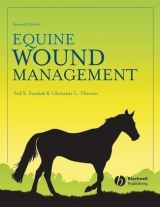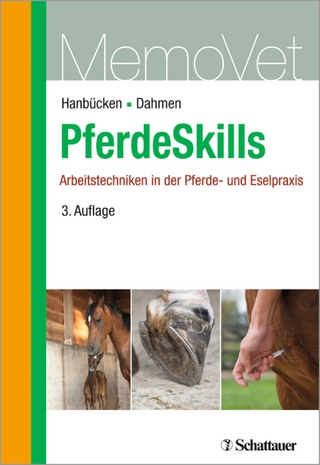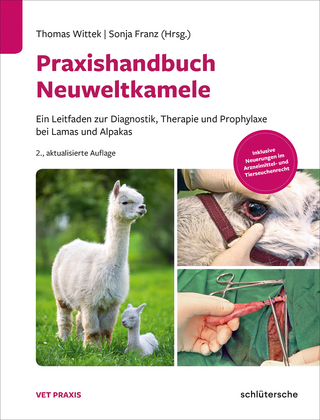
Equine Wound Management
Lea & Febiger,U.S. (Verlag)
978-0-8121-1185-9 (ISBN)
- Titel erscheint in neuer Auflage
- Artikel merken
Following a brief discussion of wound healing and factors that may influence the healing process, the book presents various approaches to wound management, the selection of suture materials and suture patterns, and their placement for wound closure. Basic principles of reconstructive surgery, including tension-relieving procedures that are practical in clinical situations, are discussed and illustrated. Reconstructive surgery of specific regions, including unique problems and treatments, is illustrated with photographs of actual clinical cases and original art work. Lacerations of the lips, ears, and eyelids, fractures and fistula of facial bones, along with lacerations, puncture wounds and avulsion injury of the upper body and of the foot are all included. Additionally there are treatment methods for exuberant granulating wounds of the distal extremity, burns and surgery to remove proliferative bone and bone sequestra plus practical methods of free skin grafting, and bandaging and casting techniques that can improve the cosmetic and functional end result.
Part 1 Principles of wound healing: inflammatory phase; debridement phase; repair phase; maturation phase; selected references. Part 2 Selected factors that affect wound healing: patient age and physical status; anaemia and blood loss; uremia; malnutrition and protein deficiency; zinc; copper and other minerals; vitamins; nonsteroidal anti-inflammatory drugs (NSAIDS); corticosteroids; trauma; infection; wound debridement; local anesthetics; sutures techniques and sutures; haematoma and seroma; movement vs. continuous passive motion; topical insulin; bandaging and dressing; magnetic fields; deyhdration and oedema; blood supply and oxygen tension; temperature and pH; selected references. Part 3 Principles of wound management and selection of approaches to wound closure: wound closure; selection of wound supports; selected references. Part 4 Selection of suture materials and suture patterns for wound closure: suture materials; suture patterns; suture placement; selection of suture pattern; selected references. Part 5 Principles of reconstructive surgery: general principles; tension relieving techniques; selected references. Part 6 Wound management and reconstructive surgery of the head region: lips; tongue; nostrils; eyelids; ears; avulsion of the lower lip; fractures; fistula of the facial bones; halter trauma to the nasal bones; congenital deviation of the maxilla, incisive bones, and nasal septum (wry nose). Part 7 Wounds of the body: lacerations; puncture wounds; burns; selected references. Part 8 Wound management and reconstructive surgery of problems associated with the distal limbs: treatment; wounds involving the fetlock, metacarpal, metatarsal, carpal, and tarsal regions; management of wounds of the pastern and foot regions and hoof wall cracks; avulsion injuries of the foot; penetrating wounds of the foot; hoof wall cracks; wounds involving synovial joints; selected references. Part 9 Principles of free skin grafting: preparation of the graft bed; donor site selection; skin grafting techniques; selected references. Part 10 Management of wounds associated with tendons, paratendons, and tendon sheaths: tendon anatomy and healing; lacerations involving the paratendon; laceration of puncture wounds involving tendon sheaths; selected references. Chapter 11 Bandaging and casting techniques: head bandage; stent bandage; basic limb bandage; foot bandage; polyvinyl chloride (PVC) pipe bandage splint; cast; cast splints.
| Erscheint lt. Verlag | 1.10.1991 |
|---|---|
| Zusatzinfo | 273 illustrations |
| Verlagsort | Philadelphia |
| Sprache | englisch |
| Gewicht | 1280 g |
| Themenwelt | Veterinärmedizin ► Großtier |
| ISBN-10 | 0-8121-1185-0 / 0812111850 |
| ISBN-13 | 978-0-8121-1185-9 / 9780812111859 |
| Zustand | Neuware |
| Haben Sie eine Frage zum Produkt? |
aus dem Bereich



